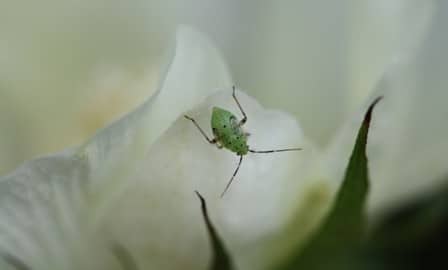Tarnished plant bugs are the #1 insect pest of cotton in Tennessee. In the fall of the year, tarnished plant bug (TPB) nymphs develop into adults on weedy hosts in response to decreasing day lengths (Snodgrass 2014). They overwinter as adults using these weedy hosts or plant debris. Previous studies have found that overwintered populations of tarnished plant bugs emerge from diapause in the early spring, triggered by a combination of cues including a good food source and warm temperatures (Snodgrass 2014). In Tennessee, we have found tarnished plant bugs early spring on shepherd’s-purse, henbit, purple deadnettle, daisy fleabane, ranunculus, and other weedy hosts. The earlier it warms up, the faster that weedy hosts have blooms or fruit for plant bugs to feed on, and the earlier they will feed, mate, and produce the first generation of the year.
Last year we began to participate in a regional protocol developed by Dr. Katharine Parys, entomologist with USDA-ARS in Stoneville, MS. The purpose of this study is to develop degree day predictions as to when tarnished plant bug will break winter dormancy and begin reproduction in the spring. We do this by taking sweep net samples on weedy hosts and observing when we begin to find overwintering TPB adults and nymphs. TPB have 5 instar (nymph or immature) stages, and we document what instar are present in our samples. When they reach the fifth and final instar, we know that overwintering adults have reproduced and the offspring have gone through all immature stages.
In 2015, we began finding a few overwintered adult TPB in late March and first and second instar nymphs by April 13. This year, we found overwintering adults Feb. 29 and first, second, third, and fourth instars by April 4. Thus, we are finding fourth instar nymphs in 2016 on dates when only overwintering adults were found in 2015. At this rate, we should find some fifth instar nymphs by the end of this week. This year, we had warmer winter temperatures (on average 11.8 degrees in Feb. and 5.8 degrees in March) and more winter annuals flowering earlier, which is probably why TPB began reproducing earlier than in 2015. Depending on future weather and the number of cotton acres planted, this may have implications for how many plant bugs we see our 2016 cotton crop.
Reference:
Snodgrass, G. 2014. Highlights of 30 years of Research on TPB in the Mississippi Delta. Midsouth Entomologist. 7(2)38-49.


